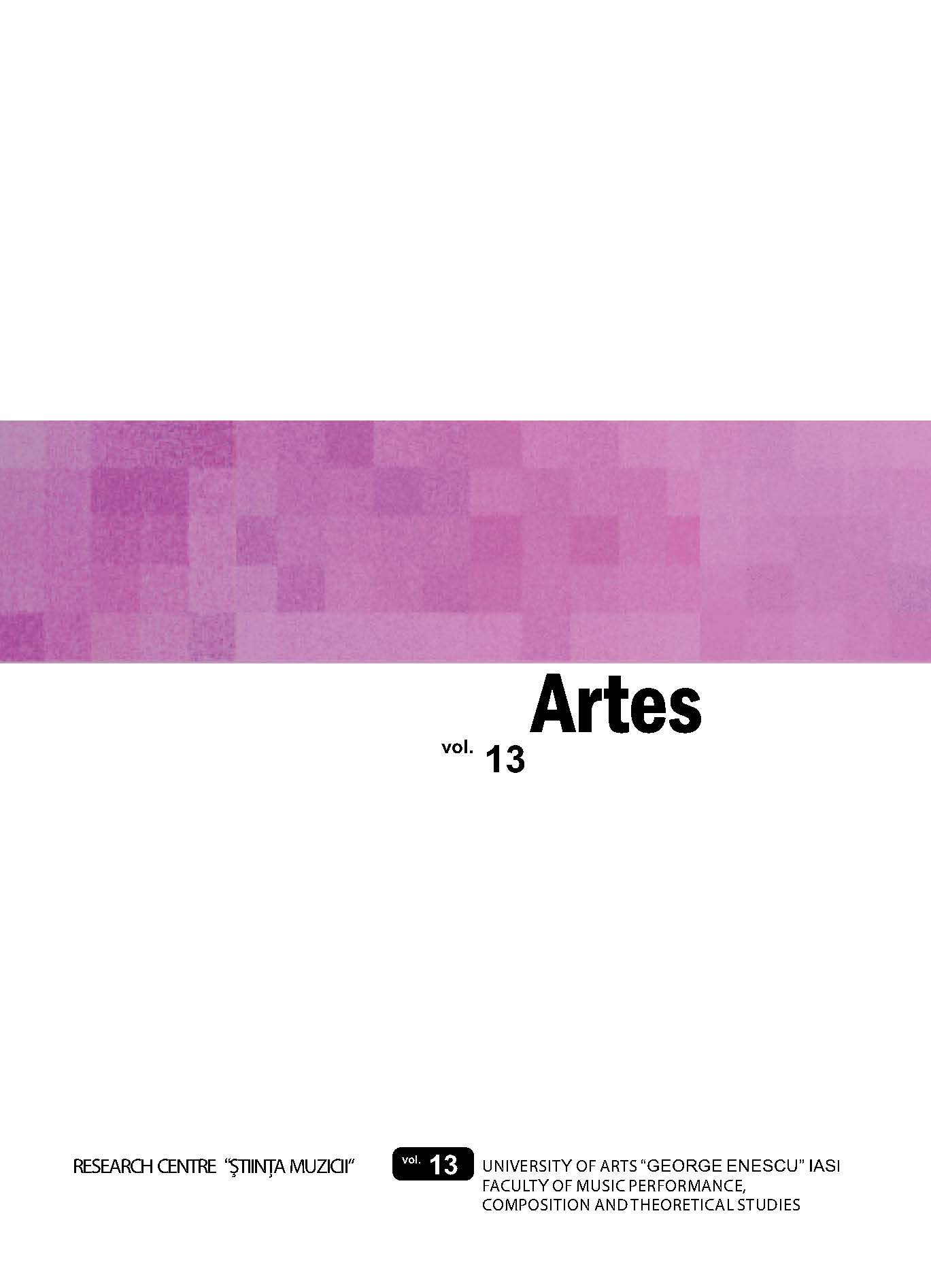The Cheironomic Signs in the Sticheraria with Koukouzelian notation
at the National Archives of Iaşi (NAI)
The Cheironomic Signs in the Sticheraria with Koukouzelian notation
at the National Archives of Iaşi (NAI)
Author(s): Irina Zamfira DănilăSubject(s): Music
Published by: Editura ARTES
Summary/Abstract: The present paper aims at presenting the cheironomic signs in some exemplary manuscripts to be found at the National Archives in Iaşi (NAI); these documents are four Sticheraria. The first codex is Ms. in Greek no. 198, Sticherarion syntomon, author: Petros Peloponnesios, in transitional koukouzelian notatation, not dated, the copying place is not known, the name of the copyist is not recorded, but it was probably copied in the last quarter of the XVIIIth century or in the first decade of the XIXth century. The next document is Ms. 203 NAI, a Sticherarion-Kalophonicon in Greek, in koukouzelian notation in its form of the greatest development. Ms. 203 is not dated, the publication place is not known, the name of the copyist is not recorded, but it was probably copied in the last decade of the XVIIIth century or in the first decade of the XIXth century. Both mentioned manuscripts come from the ”The Dormition of the Holy Virgin” Church in the town of Roman (Neamț County, Moldavia). The other documents are two unreported manuscripts: Mss. 204 and 206. Ms. 204 NAI in Greek, Sticherarion-Kalophonicon, by Chrysaphes the Younger, in Koukouzelian notation in its form of the greatest development, not dated, the copying place is not known, the name of the copyist is not recorded, but it was probably copied in the first half of the XVIIIth century. Ms. no. 206 NAI in Greek is a Sticherarion-Kalophonicon, by Germanos of the New Patra, in Koukouzelian notation in its form of the greatest development, copied at the Iviron Monastery by Kir Yakoumis in 1736. In Ms. 198 NAI, in transitional Koukouzelian notation, the number of cheironomic signs is relativelly small, because this type of notation is more synthetic. The megalai hypostaseis used in Ms. 198 are: antichenoma, psifiston, varia, omalon, eteron, paraklitiki, tromikon, piasma, lighisma, apoderma. In Ms. 203, 204, 206, in koukouzelian notation in its form of the greatest development, apart from the signs adopted from the Chrysantean notation (antichenoma, psifiston, varia, omalon, eteron), it appears a large number of megalai hypostaseis like: lighisma, piasma, tromikon, uranisma followed by thematismos eso with the syllable ne underneath, xironclasma, eteroparakalesma, psifistoparakalesma, the ftora thematismos esso, thes kai apothes.
Journal: Artes. Journal of musicology
- Issue Year: 2013
- Issue No: 13
- Page Range: 118-137
- Page Count: 20
- Language: English

